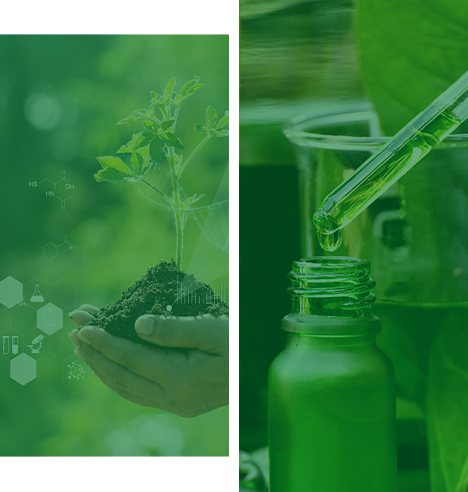Making
Chemicals Green
Markus Hartung, Vice President, Global Commercial Processes and Region EMEA, Evonik Operations GmbH talks to our host, Pranjal Sharma, about how chemicals are becoming better and what processes are being introduced to make chemicals green.
The Chemistry of Green Chemicals and Sustainability
Being surrounded by them entirely, chemicals play a huge part in our life. However, when we think of chemicals, the first thing which comes to our mind is something toxic—something which is hurting humans as well as the environment. What can be done to make things better and safer?
Making Chemicals Green
To make chemicals green, we need to start from the core, i.e., focusing on catalysts. Catalysts are the enablers for making chemicals. Without catalysts, most chemicals cannot be produced. Thus, they play a crucial role in making chemicals in general, while also making chemicals free.

Evonik offers a symbolic process where it brings back the performance of such a catalyst up to 80-90% as a fresh catalyst. And this has a direct impact, not only on the environment but also on catalyst users since there is a lower raw material consumption (for example) to produce a new catalyst instead. Moreover, it has a direct impact on CO2 emissions as well as on the actual footprint of every catalyst user. But the question is whether this process is relevant for industries manufacturing or creating a product.
Relevance of Catalyst Processing Across Industries
Since catalysts are produced in all different chemical field spaces, the hydro-processing catalyst is prominent in several industries, including the petrochemical and pharmaceutical industry. There are various catalysts like precious metal based or nickel-based catalysts where metals act as active ingredients. The precious metal can be kept as it is the key element of the catalyst. It can be kept in a loop to take back poisons as well as less active catalysts from the customers. In simple words, the precious metal is recovered so that it is used again to produce a fresh catalyst and brought back to the customers. The process is applicable in the pharmaceutical industry as well as in the food industry.
For instance, Sorbitol, produced by a nickel catalyst, is used to sweeten beverages like Coca-Cola and Fanta. This reflects on our everyday acquaintance or consumption of catalysts, whether it is a plastic thing on our iPads or iPhones. Catalysts play a vital role here that we can use these materials with all their different applications.
Transitioning towards a Green Future with Greener Chemicals
"The transition to using greener chemicals is happening on a global level. Green Chemicals will play an important role in making the world more sustainable and ensuring that we can hand over a great place to live to our kids!" - says Markus.
With Europe being the frontrunner, followed by the Middle East and Asia, this will be seen in the next two decades—given the rising implications of global warming and climate change. Moreover, installing and building a new chemical plant with technology that is neither new nor proven will cost time, money, and effort. Hence, we need to start now so that we can secure a good future for the upcoming generations.
Presently, mixing simple earth materials with clean non-fossil energy is enabling basic commercial chemicals like chlorine, hydrochloric acid, etc., to be prepared without CO2 emissions or emitting toxic waste, at lower costs than normal.
The future is almost here, and it is being massively impacted by climate change. How can we make chemicals better and sustainable?
We cannot avoid chemicals. We need to have them in place because they play a vital role in our daily lives. Therefore, I would like to see a higher recycling code as well as brave decisions being taken toward our future, the transition, and this change.
- Tune into:
-
 Apple
Apple
-
 Spotify
Spotify
-
 Amazon Music
Amazon Music

